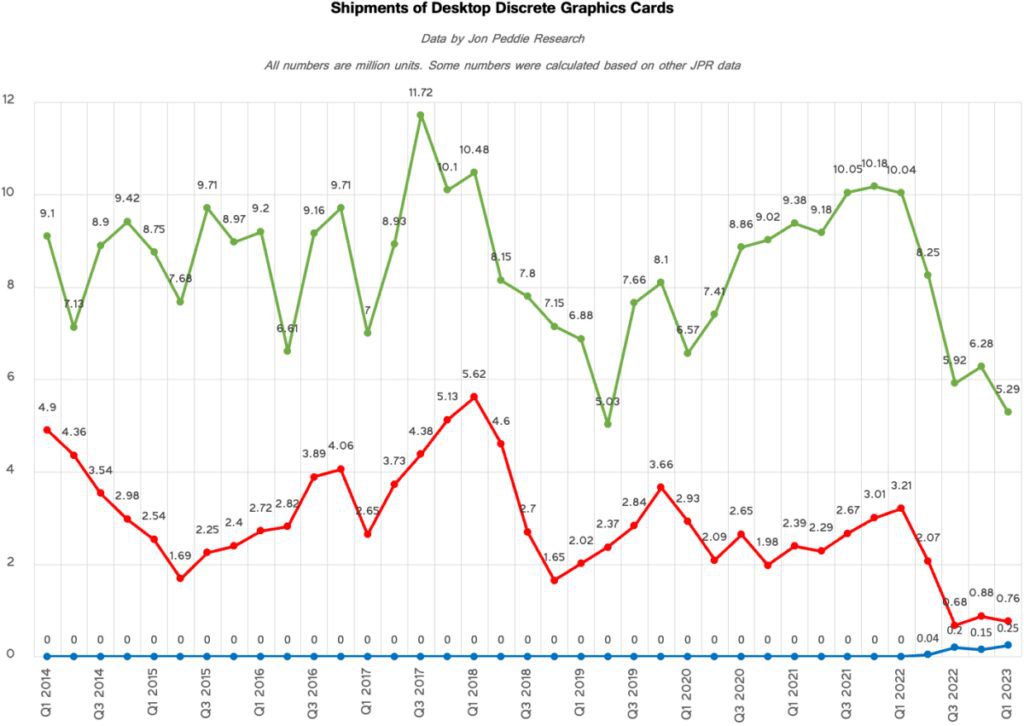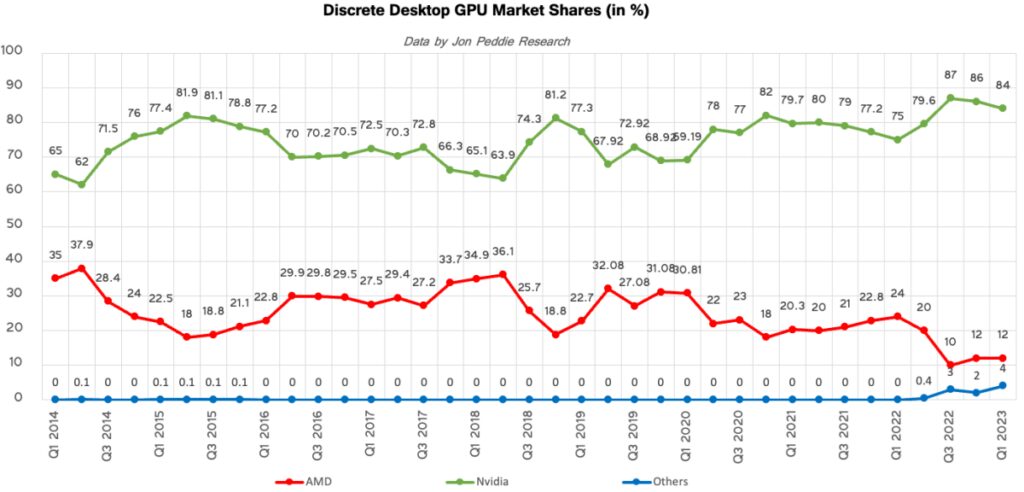According to Jon Peddie Research, sales of standalone graphics cards for desktop PCs continued to decline in Q1 2023 as retailers and PC manufacturers continued to deplete their inventories while AMD and Nvidia prepared to release new generation mainstream add-in-boards.
However, even as the market reached a new multi-decade low, Intel continues to gain market share with its discrete Arc Alchemist GPUs and today controls 4% of the market.
According to JPR, sales of desktop graphics cards fell 12.6% sequentially and 38.2% year on year in the first quarter to 6.3 million units.

The quarterly sales of discrete graphics cards were 6.3 million, the lowest in decades. According to Jon Peddie, the founder and president of JPR, shipments of new add-in boards (AIBs) have been affected by a decline in the PC market.
This decline can be attributed to concerns about inflation, layoffs, and consumers purchasing previous-generation boards as suppliers aimed to reduce their inventory levels.
However, Peddie predicts that sales of new-generation boards will improve in the third quarter as inventory levels decrease. The second quarter is typically slow, but the impact may not be as severe as anticipated.
Nvidia maintained its market dominance, with an 84% market share. It supplied around 5.29 million discrete graphics cards for desktop PCs, the lowest result in several years in the desktop market.

AMD came in second place with a 12% market share and 0.76 million AIB devices shipped. AMD’s Radeon RX graphics cards have sold fewer than one million units per quarter for PCs. Nonetheless, given that PC makers and the channel depleted inventory in the first quarter, AMD’s results are not surprising.
Unlike Nvidia and AMD, Intel started ramping up shipments of its Arc Alchemist A700-series graphics cards in Q1 after launching them in late Q3. As a result, it grew sales and won market share.
Of course, Intel’s unit shipments were roughly 250,000 graphics cards, which are insignificant in comparison to Nvidia’s 5.29 million, but it is clear that Intel’s shipments of standalone AIBs are increasing.
Also Read:








